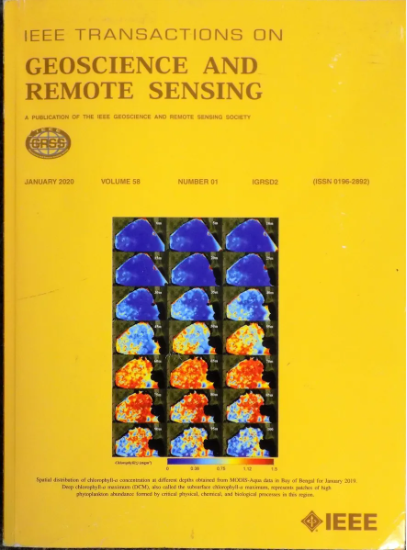Completing Any Borehole Images
IF 8.6
1区 地球科学
Q1 ENGINEERING, ELECTRICAL & ELECTRONIC
IEEE Transactions on Geoscience and Remote Sensing
Pub Date : 2024-09-27
DOI:10.1109/TGRS.2024.3469394
引用次数: 0
Abstract
Borehole images contain the physical information and chemical properties of geological formations, which are crucial for high-resolution interpretation of subsurface stratigraphic and structural features and geological modeling of the subsurface. However, due to the special design of borehole tools and variations in borehole diameter, all kinds of borehole images (FMI, Earth-imager, OMRI, and OBMI) obtained from scanning the borehole walls exhibit varying degrees of data missing, with OBMI data missing up to 70%. We propose a deep-learning approach with a hybrid CNN and Transformer architecture to fill in the gaps in borehole images, addressing the challenges of missing training labels and filling large-scale gaps. To solve the challenge of missing labels of complete borehole images, our deep-learning model is pretrained on a vast collection of complete natural and seismic images and then fine-tuned with a partial loss function on incomplete borehole images. A multistage completion strategy is further introduced into the inference stage to enhance the continuity and textural features of the completed areas. In addition, by incorporating the circular consistency constraint between the left and right sides of the borehole image, our method can reasonably complete the gaps with highly consistent features on both sides of the image. During the tests on borehole images from multiple wells in different work areas with various geological features, our model is capable of completing any type of borehole image with masks of any size, ultimately yielding complete images free of any artifacts, while also possessing richer and more reasonable textures and semantic information. We have open-sourced the code and the fine-tuned models, which are available at完成任何钻孔图像
钻孔图像包含地质构造的物理信息和化学性质,对于高分辨率解释地下地层和构造特征以及地下地质建模至关重要。然而,由于钻孔工具的特殊设计和钻孔直径的变化,扫描钻孔壁获得的各种钻孔图像(FMI、Earth-imager、OMRI 和 OBMI)都存在不同程度的数据缺失,其中 OBMI 数据缺失率高达 70%。我们提出了一种采用混合 CNN 和 Transformer 架构的深度学习方法来填补钻孔图像中的空白,解决了训练标签缺失和填补大规模空白的难题。为了解决完整井眼图像标签缺失的难题,我们的深度学习模型在大量完整的自然和地震图像上进行预训练,然后在不完整的井眼图像上使用部分损失函数进行微调。在推理阶段进一步引入多级补全策略,以增强补全区域的连续性和纹理特征。此外,通过在钻孔图像的左右两侧加入圆形一致性约束,我们的方法可以合理地完成图像两侧特征高度一致的缝隙。在对来自不同工作区、具有各种地质特征的多口井的井眼图像进行测试期间,我们的模型能够用任何大小的掩膜完成任何类型的井眼图像,最终得到没有任何伪影的完整图像,同时还拥有更丰富、更合理的纹理和语义信息。我们已将代码和微调模型开源,可在 https://github.com/zgyustc/LogMAT/tree/master 上查阅。
本文章由计算机程序翻译,如有差异,请以英文原文为准。
求助全文
约1分钟内获得全文
求助全文
来源期刊

IEEE Transactions on Geoscience and Remote Sensing
工程技术-地球化学与地球物理
CiteScore
11.50
自引率
28.00%
发文量
1912
审稿时长
4.0 months
期刊介绍:
IEEE Transactions on Geoscience and Remote Sensing (TGRS) is a monthly publication that focuses on the theory, concepts, and techniques of science and engineering as applied to sensing the land, oceans, atmosphere, and space; and the processing, interpretation, and dissemination of this information.
 求助内容:
求助内容: 应助结果提醒方式:
应助结果提醒方式:


